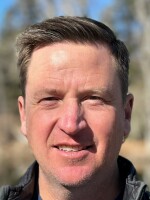ROBERT SIEGEL, HOST:
The oil spill that happened last month in Santa Barbara County is worse than first thought. A corroded underground pipeline ruptured on May 19, polluting the California coastline with an estimated 100,000 gallons of oil. And now, tar balls are washing ashore on beaches as far south as Los Angeles and Long Beach. NPR's Kirk Siegler filed this report.
KIRK SIEGLER, BYLINE: On a gray, misty morning, Dana Murray walks along the Venice Beach shoreline. Wearing plastic gloves, she bends down every few feet and scoops up a blob of hardened, congealed oil that's just washed up onto the sand.
DANA MURRAY: As you can see, it's all mixed with the feathers and kelp.
SIEGLER: Murray is a scientist with a local nonprofit called Heal the Bay, one of the groups helping tally the impacts of the spill on this coastline's kelp forests, coral reefs, marine mammals and sea birds.
MURRAY: So right now you see a gull - a sea gull - picking up a huge blob of oil thinking that it's food.
SIEGLER: It's possible the impacts now extend more than a hundred miles away from the original site.
MURRAY: Now there's other gulls coming by. The gull's trying to break-up the oil blob into smaller pieces to eat.
SIEGLER: There are natural oil seeps along this part of the coast, but this much oil washing up on the beach here is unusual and Murray doubts it's a coincidence.
MURRAY: And once it gets out there in the currents and the winds, it can really spread. And that might be what we're seeing here in Santa Monica Bay.
SIEGLER: The coast guard has sent samples away for testing that could confirm this oil is coming from the Santa Barbara spill. That would mean the pipeline company, Plains All American Pipeline, would be responsible for paying to clean up a much bigger area than first thought. For Murray, this shows how even a relatively small spill can have huge impacts on marine life.
MURRAY: You had a mortality event as well as probably long-term toxicity in the food chain.
SIEGLER: At last count, more than 120 dead birds have been found and more than a hundred dead mammals, including three-dozen sea lions and a dozen dolphins.
MURRAY: This is something that every day that goes by, every week, every month, we're going to learn more and more.
SIEGLER: Indeed, scientists say it could take many more months to fully understand the scope of this environmental disaster. It occurred adjacent to one of the most biologically diverse places on the West Coast, a wildlife-rich but volatile stretch of sea where warm waters from Mexico clash with cold waters from the North. If there's an upside here, it's that this area is also one of the most studied marine environments in the U.S.
SEAN HASTINGS: We'll have good baseline data on how to restore not only this part of the coastline, but other areas that may be impacted by future spills.
SIEGLER: Further up the coast, Sean Hastings has been studying the footprint of the spill by air and up-close in boats. He's with the National Oceanic and Atmospheric Association, or NOAA, at its Channel Islands National Marine Sanctuary. [POST-BROADCAST CORRECTION: We incorrectly refer to NOAA as the National Oceanic and Atmospheric Association. In fact, the organization's name is the National Oceanic and Atmospheric Administration.]
HASTINGS: You still see oil on that high tide line staining the rocks. And what's less understood is how much oil made its way into the water column or sank and got into the sediments.
SIEGLER: Hastings says that's why it will take many more months, if not years, before the full impacts on wildlife and underwater ecosystems are known. NOAA is one of the federal agencies that will be here long-term overseeing restoration and rehabilitation of this stretch of fragile coastline. And Hastings is urging patience.
HASTINGS: We're trying to convey to the public that right now, you know, the house is on fire. Let's put out the fire. And once the fire's out, then you can assess the damage and then begin the process of re-building.
SIEGLER: The responsible company, Plains All American, has pledged it too will be here for the long haul. Kirk Siegler, NPR News, Los Angeles. Transcript provided by NPR, Copyright NPR.



